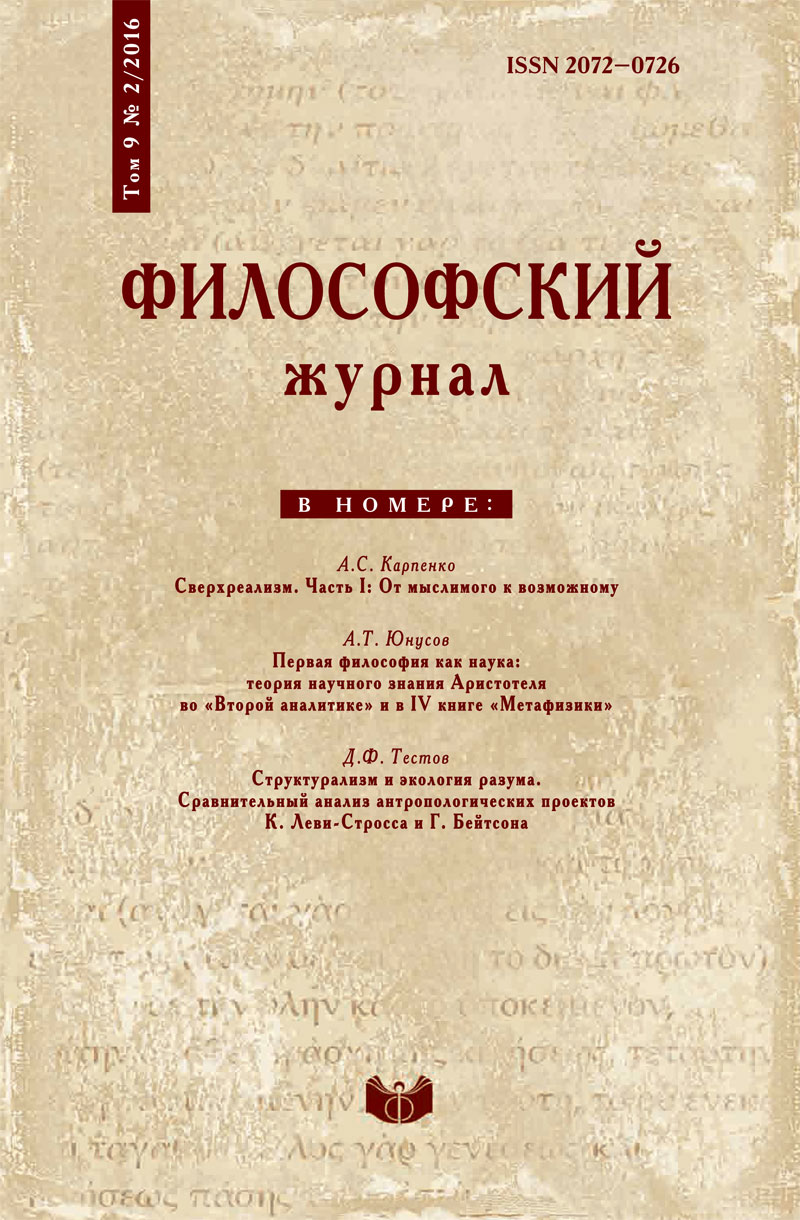Hyperrealism, part I: from the thinkable to the possible
DOI:
https://doi.org/10.21146/2072-0726-2016-9-2-5-23Keywords:
logical space, philosophy of consciousness, counterfactual thinking, metaphysics of modality, principle of fullness, anthropic principle, Multiverse, hyperrealismAbstract
Hyperrealism conceives of the Multiverse as multivariance of the Universe, all variants being equiprobable. Problematics of the philosophy of mind, the phenomenon of counterfactual thinking, modal epistemology, various theories of possible worlds, the results of contemporary cosmology, the anthropic principle – all of this amalgamates into one global tendency which aims to maximally expand the sphere of the real. In the present paper, on the basis of wide factual material, the following argument is established: (1) All that is thinkable is also possible (Wittgenstein, David Chalmers, etc.); (2) All that is possible is also actualized (the principle of plenitude, the principle of fecundity, modal realism, the worlds of Everett, etc.). From this, by transitivity, we obtain: (3) All that is thinkable is also actualized (the principle of fullness). Then the basis of the principle of fullness is a thinking being, the one endowed with counterfactual thinking, whose function is to generate, by means of its consciousness, ever newer possibilities. Now the reality is born out of the closure of human consciousness upon itself, that is, from logic, until everything logically possible is actualized. There are two essential prejudices which hinder the development of human reflective faculties: (1) Constant repetition that history has no place for the subjunctive mood; (2) The hope that everything ends eventually. The former, as well as the latter, points to the strict limitations of modern human thought. Overcoming such prejudices leads to an entirely novel view of the world around us and to new, much greater, opportunities for its philosophical understanding.






